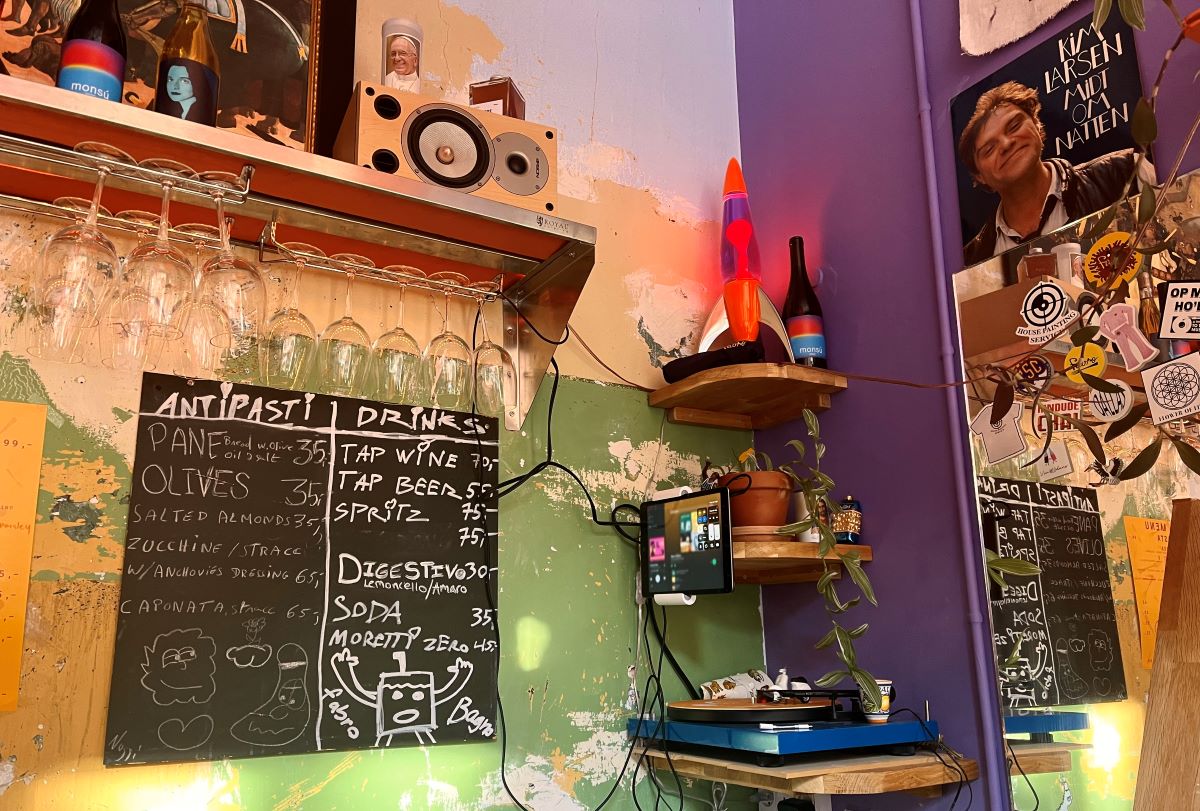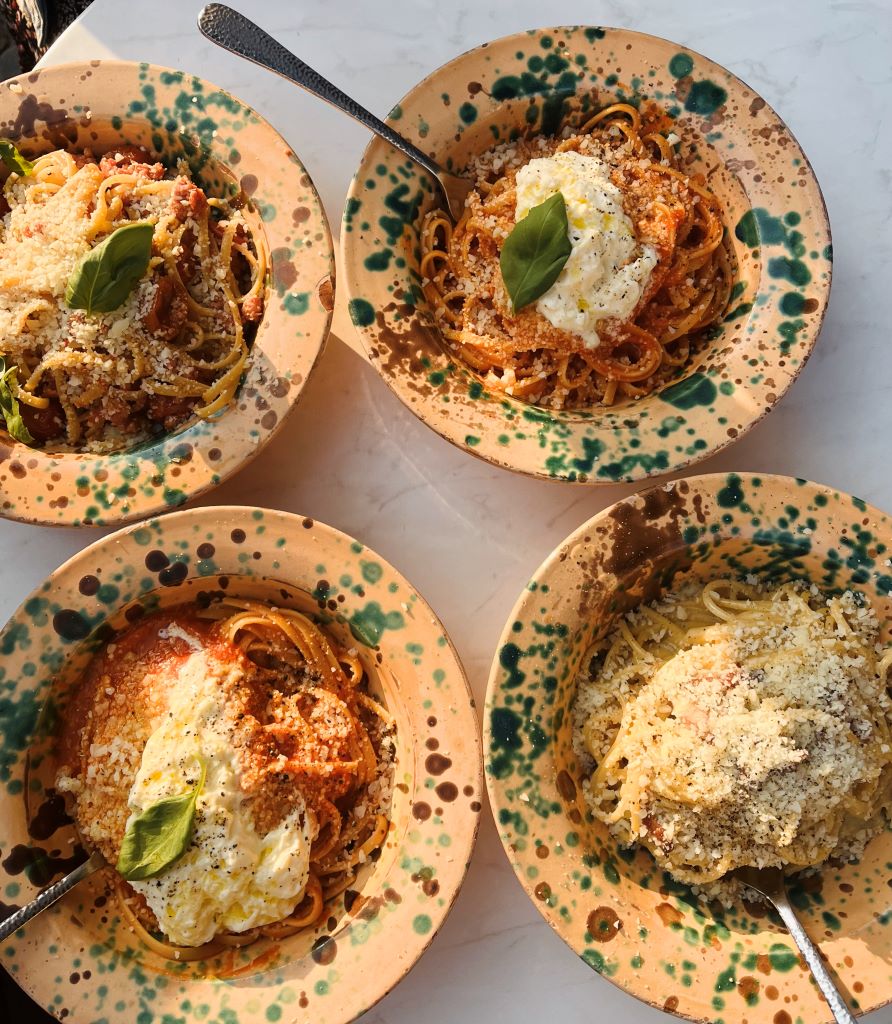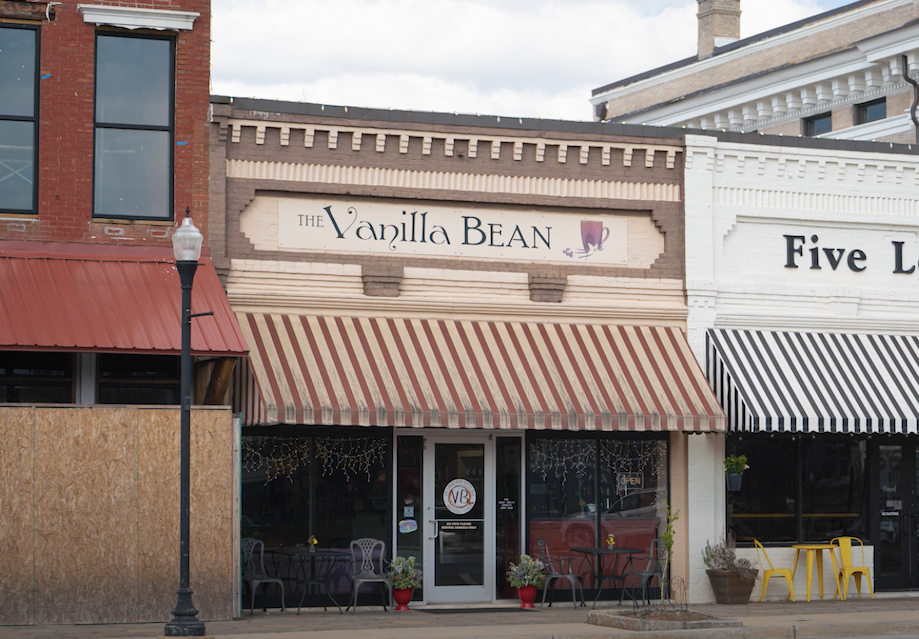Outside Fabro, an Italian restaurant in Copenhagen, Denmark, chatter can be heard from multiple blocks away. Wine glasses are in practically every hand; customers are standing on the sidewalk, sitting on the curb and taking pictures around the scenic street; and smiles are on everyone’s faces.

Hygge and Found Family
While in Copenhagen, I found several themes surrounding how the Danes eat. For one, they love to be outside, though that is not exclusive to eating. Whether on restaurant patios, picnic blankets or public benches, the Danes crave the sunlight and fresh air. Many restaurants are even equipped with blankets for colder weather, placing them on the backs of outdoor chairs.
Another idea is based around the Danish term “hygge.” Hygge can be about family and connection with the people you love as well as a comfortable environment where you can deeply relax. For the Danes, this is often associated with eating. They love to sit and enjoy their food and drink, no rush and no distractions. Fabro effectively portrays both sides, and despite not serving Danish cuisine, they still offer their customers a Danish experience.
“It’s really about the hygge … it means as cozy as possible,” said Fabro bartender Manilla Ghafuri.
Isabelle Weathersby, an American and first-timer in Fabro and Copenhagen, made a distinct observation about Danish dining. She sees “tables outside and the small dining area” as “very on par with Danish restaurant experiences” and a crucial component of hygge.
As for the togetherness aspect of hygge, Fabro’s staff members have that connection with each other but also effectively create a cozy, relaxed atmosphere for their customers.
“Fabro, it’s really about friends, friends and family,” Ghafuri said. With a modest staff of about 12 employees, the restaurant is a very close-knit community. Aside from being a small company, nearly all of the workers grew up together.
“All of the colleagues are friends. … They [went] to high school together. … They also invite their friends here and family,” explains Ghafuri.
Rasmus Henriksen, a Fabro employee of about four years, believes that Fabro is different from other restaurants in the Copenhagen area.
We’ve been lucky enough to create a space where everyone feels like they can show up and be who they want to be,” Henriksen said.
At Fabro, there is an immediate sense of belonging from the colorful customers, friendly workers and wild decor.

Copenhagen Community
Most tables at Fabro seat two-to-four people. However, inside the restaurant, there is one large circular table that seats six people. If you thought they reserved the table for large groups, you would be wrong. Gently pushed together groups share the space, allowing them to intermingle or simply share a pleasant experience.
I sat next to two couples my first time there, one Danish and one from the United Kingdom. While everyone had their own private conversations, I was able to have brief interactions with them and still be exposed to people from around the world, something that I had not yet seen at any other restaurant in Denmark, or the world for that matter. At this table, we were all equals, all people who had come to eat good food.
Fabro’s Italian Roots
Fabro is a small Italian village about two hours northeast of Rome. Using family recipes, three friends created Fabro with a special image in mind.
First is Fabro’s small menu, which includes four pasta dishes and one dessert.
“It’s just simple and really also simple for the customer. … We like the four dishes . … Always if there’s a new dish, we’ll take one of them out to try that,” Ghafuri said.
As someone who is unfamiliar with the Danish language, Weathersby is often overwhelmed by Danish menus.
“I liked the limited menu, honestly. I feel like a lot of these places I get overwhelmed by so many options. … But here it’s like there are four options, and they’re all going to be good,” said Weathersby.
Furthermore, customers can feel even better about their dining choices due to Fabro’s community-focused practices. Henriksen shared that Fabro buys local, organic ingredients and imports their wine and cheeses straight from Italy.
Another unique concept at Fabro is their handmade dishes. Orange with green and brown splatters, their plates are also from Italy, specifically from what is likely the only potter in Fabro, Italy.

“He’s one guy who makes them, and it takes him forever,” Henriksen said. “When we get them, we place a new order because we break them and then by the time he makes them and ships the next one, we’re like, we need them.”
As for the founder, he seems to be rooted in his Italian heritage just as much as his Danish side.
“Italy is really near his heart and the family and the food. So he has it with himself, and he shares it with other people,” Ghafuri said.
Fabro gave me the rare opportunity to experience a Danish restaurant and an Italian restaurant all at once. The experience has influenced and inspired me as I’m sure it has to everyone who has crossed its threshold.
Leighton Dancy is a junior majoring in journalism.








Show Comments (0)